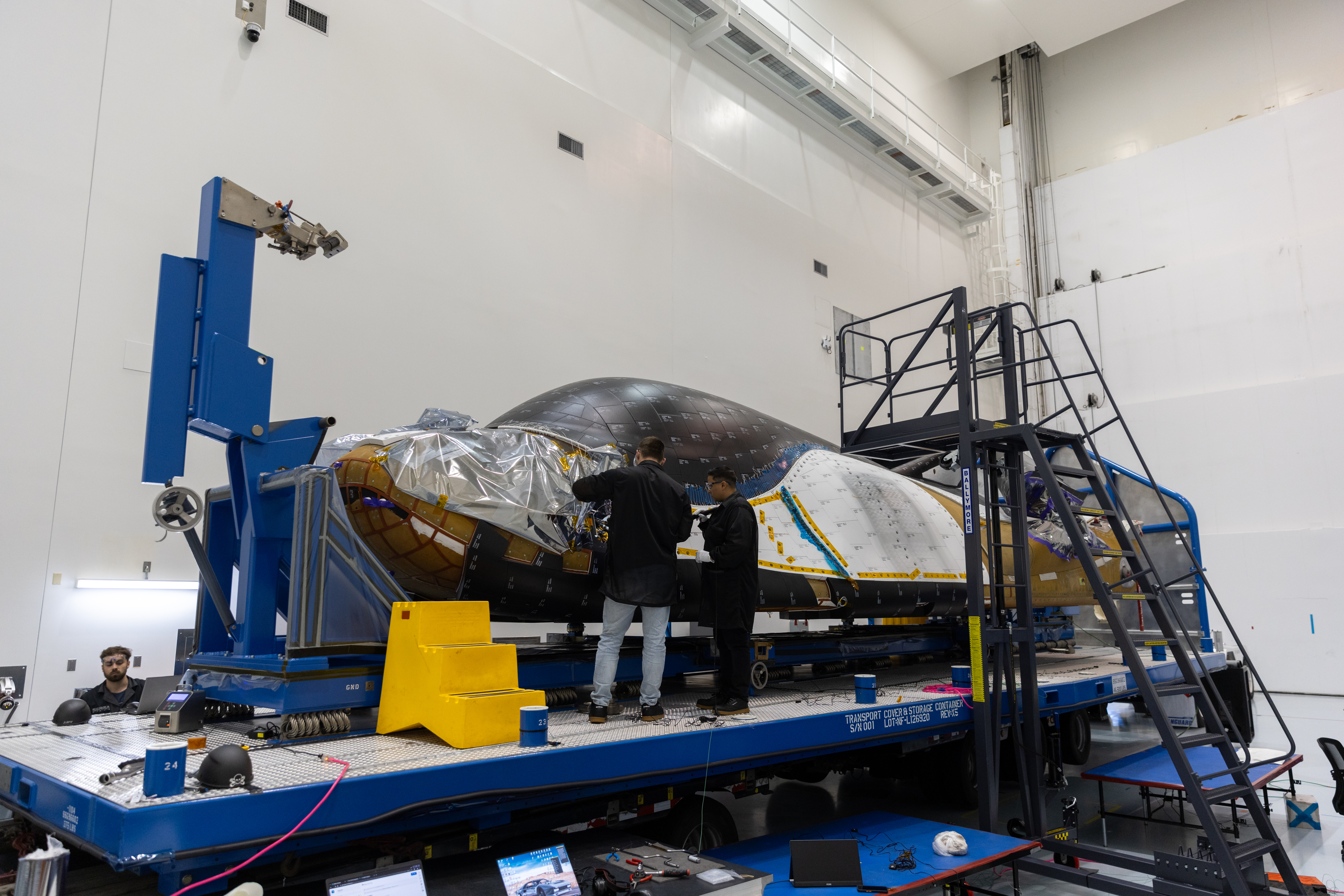
Photo: Charles Boyer / Talk of Titusville
Florida weather can be a capricious, fickle thing, and that’s just what it has been the past few days on the Space Coast: windy, occasional rain, or sometimes both — weather that’s normal for this time of year but not very good for launching rockets. That caused two scrubs for SpaceX this week, due to high winds at Cape Canaveral.
Today, on the third attempt, the winds abated and the storms stayed far enough away for SpaceX to launch Falcon 9 carrying the Astra 1P / SES-24 television satellite to orbit. Liftoff was at the opening of the launch window at 5:35 PM EDT and roughly eight-and-a-half minutes later, Booster B1080 touched down safely aboard ASDS ‘Just Read The Instructions’ in the Atlantic Ocean, completing its mission for the day. At 6:10 PM EDT, SpaceX confirmed successful deployment of the payload, marking another successful mission for the launch services company. Astra 1P will now move under its own power to geosynchronous orbit, where it will begin its commissioning process.

Photo: Charles Boyer / Talk of Titusville
Payload
Built by Thales Alenia Space, Astra 1P is a television satellite that will serve the pan-European market once operational. It is the most powerful wide-beam satellite to ever orbit at 19.2 degrees East. It offers up to 80 physical transponders with bandwidth filters and can carry up to 500 high-definition stations to roughly 119 million homes in its target markets.
Astra 1P was ordered in November 2021 (along with Asra 1Q). It is based on the Thales SpaceBusNEO platform and intended to replace three satellites. It is planned for about fifteen years of use.

Photo: Thales Alenia Space
Launch Replay
Booster B1080
Booster B1080 completed its ninth flight today after it successfully touched down on ASDS ‘Just Read The Instructions’, which was stationed in the Atlantic Ocean.

Photo: Charles Boyer / Talk of Titusville
JRTI and B1080 will now return to Port Canaveral, where the booster will be offloaded and transported to SpaceX’s Hangar X facility at Kennedy Space Center. There, it will be inspected, refurbished as necessary and prepared for its next flight assignment.
| Booster B1080 | ||
| Flight Number | Mission | Date |
| 1 | Axiom-2 | May 21, 2023 |
| 2 | Euclid | July 1, 2023 |
| 3 | Starlink 6-11 | August 27 2023 |
| 4 | Starlink 6-24 | October 22, 2023 |
| 5 | Axiom-3 | January 18, 2024 |
| 6 | CRS-30 | March 21, 2024 |
| 7 | Starlink 6-52 | April18, 2024 |
| 8 | Starlink 6-62 | May 23, 2024 |
| 9 | Astra 1P / SES-24 | June 20, 2024 |
Next Scheduled Launch
SpaceX plans to launch Starlink satellites aboard a Falcon 9 from Cape Canaveral Space Force Station’s SLC-40 on Sunday, June 23rd.
- Date: NET June 23, 2024
- Organization: SpaceX
- Mission: Starlink 10-2
- Rocket: Falcon 9
- Launch Site: SLC-40, Cape Canaveral Space Force Station
- Launch Window: 01:03 PM – 05:03 PM EDT
- Payload: 22 communications satellites
Keep in mind that launch dates and times change often. Launch attempts can be scrubbed anytime due to weather, technical reasons, or range conditions.












Leave a Reply